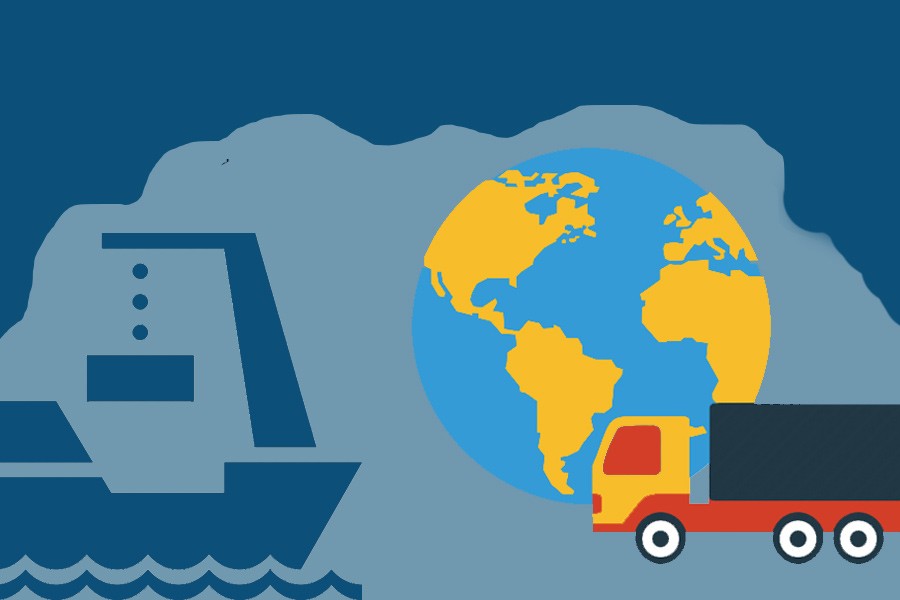
Published :
Updated :

For years global trade predictions have been marked by inconsistency, with leading organisations providing conflicting forecasts. This has largely been due to differences in data collection methods, the varying credibility of sources, and the distinct models employed by each entity to analyse economic trends. Despite this history of divergent outlooks, a rare consensus has recently emerged among some of the most reputable international agencies: the International Monetary Fund (IMF), the Organisation for Economic Co-operation and Development (OECD), and the World Trade Organisation (WTO).
These institutions now project an optimistic future for global trade, predicting a notable rise in trade volumes starting in 2024 and continuing beyond. Their key forecasts include:
l A potential doubling of global trade growth in the coming year;
l An improvement in economic conditions, characterised by lower inflation, declining interest rates, and increased economic activity across various regions;
l The World Economic Forum's Global Future Council on Trade and Investment emphasises the importance of reshaping global trade to foster sustainable, resilient, and equitable growth.
While the alignment in forecasts presents an encouraging outlook, the path ahead for global trade remains intricate, with both opportunities and risks continuing to influence the international economic landscape. They caution that despite these positive indicators, substantial risks remain. Economic disparities between countries, geopolitical tensions, and the uncertain pace of recovery from past disruptions (such as the pandemic and supply chain issues) still pose significant challenges to global trade.
The OECD expects global trade in goods and services to grow by 2.3 per cent this year and 3.3 per cent in 2025 - more than double the 1.0 per cent growth in 2023. The first OECD Economic Outlook in 2024, published in April, expects falling inflation will enable central banks to start lowering interest rates, but adds that real rates are likely to remain "above estimated neutral levels". Meanwhile, the IMF's latest World Economic Outlook puts world trade growth at 3.0 per cent and 3.3 per cent for 2024 and 2025, respectively, despite revising down its projections from earlier in the year. The WTO projects world merchandise (goods) trade volumes to grow 2.6 per cent and 3.3 per cent in 2024 and 2025 respectively, after a significant decline last year.
OECD's chief economist, Clare Lombardelli, told the Financial Times that trade was growing in line with wider economic growth. Slow but steady economic growth at 3.2 per cent for 2024 and 2025 is predicted by the IMF in its World Economic Outlook - with a small uplift for the advanced economies but slightly lower growth in emerging and developing economies. Lombardelli expects China and East Asia to be the main drivers of global growth. On the other hand, the WTO sees Africa growing faster than any other region this year - at 5.3 per cent, North America 3.6 per cent, the Middle East 3.5 per cent and Asia 3.4 per cent, while it expects European exports to trail other regions at just 1.7 per cent.
All three organisations are predicting a decline in headline interest rates, with the OECD expecting them to drop to around 2.0 per cent for the Euro area, the US and Japan by 2025. A drop of 3.4 per cent is expected across all member countries this year and the next.
Despite the optimistic outlook delivered by the IMF, OECD and WTO, world trade is not out of the woods yet. WTO Director-General Ngozi Okonjo-Iweala cautioned that geopolitical tensions and trade fragmentation must be mitigated to keep growth on track. The Red Sea crisis and conflict in the Middle East are causing delays and increasing shipping costs for some sectors, the WTO says in its report. The organisation also points to signs of fragmentation and a regrouping of trade along geopolitical lines. US-China trade grew less than the two countries' trade with the rest of the world, for example. Since the start of the war in Ukraine, trade within blocs of politically aligned economies - roughly split into "East" and "West" - increased by 4.0 per cent more than trade between them.
The WTO also points to environmental risks such as the low water levels in the Panama Canal - one of the world's main shipping arteries - adding to the geopolitical issues affecting this and another major trade channel, the Suez Canal.
All three organisations highlight ongoing monetary risk factors. Inflation could take longer to come down than anticipated, interest rates are likely to remain volatile, and there may be a lag in impact for those tied into high interest rates for long periods, such as mortgage holders.
In the face of rising government debt, the OECD recommends prudent monetary policy - containing inflation and servicing mounting debt burdens. It also calls for a stronger policy of investment to drive long-term growth and living standards through fostering innovation and tackling climate change.
However, while developed countries can look ahead with increased optimism, the IMF warns about the deepening chasm between them and many low-income countries. Low growth and high inflation in these markets will require structural reforms to encourage domestic and international investment, alongside reducing reliance on funding, debt management and mobilising the countries' young populations, it says. The IMF's observation pertaining to the need for structural reforms for low income countries refers to complex challenges and resonates well with what the current interim government in Bangladesh is up for. It is here that the optimistic predictions may not at all be inclusive, if these challenges do not get adequately addressed.
wasiahmed.bd@gmail.com


 For all latest news, follow The Financial Express Google News channel.
For all latest news, follow The Financial Express Google News channel.